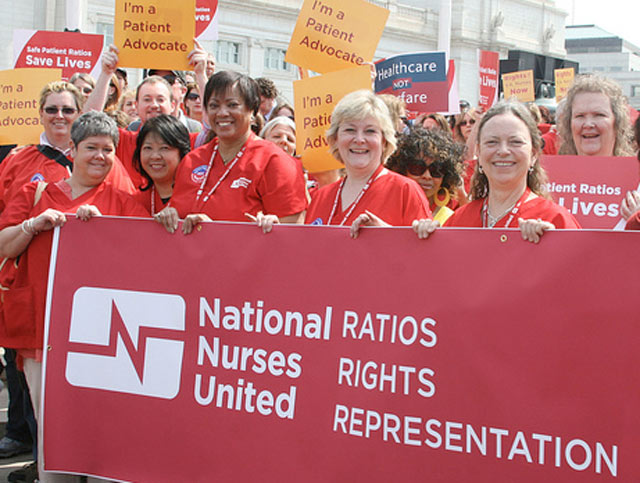The Labor Movement Must Organize the Economy of 2050, Not 1950

One thing I’ve stated again and again, especially when I talk to reporters, is that the union movement and the supporters of the workers’ struggle more generally has to organize the economy of 2050, not 1950. We need to move past the nostalgia of the industrial shop floor that created the CIO and instead recreate the labor movement for what the economy actually is today, not what we wish it was. The industrial jobs are never coming back in any kind of numbers. Even if the factories were to return to the U.S., they would be so heavily automated that there’s not the kind of numbers that could replicate the CIO model of organizing. Instead, we need to organize Amazon and Wal-Mart and health care workers.
While there are many projects that require blue-collar work, there’s little reason to treat such employment as an end in itself. In the long view, it seems not to be a category of labor for which our economy generates consistent demand. Yet there are other kinds of jobs that we do seem to require, but reward with low pay and dangerous working conditions.
As Rachel Dwyer, a sociologist at the Ohio State University, has shown, the “care economy” — jobs tending to young, old, disabled and sick people, along with housekeeping, food service and domestic work — is the locus of significant employment growth. This sector generated 56 percent of growth in low-wage jobs in the 1980s, 63 percent in the 1990s, and 74 percent in the 2000s. Such workers, of course, have borne the worst of the pandemic’s dangers.
…
As jobs were lost and social supports of all kinds were cut back over the 1980s and 1990s, however, health benefits proved relatively more resistant. Even Medicaid, the more politically vulnerable and stingy public health entitlement (next to the mammoth Medicare), saw its inflation-adjusted spending grow 676 percent from 1980 to 2019. The same forces that made the country more unequal also made it more reliant on Medicare and Medicaid and, despite periodic budget-cutting pressure, these programs have grown in a way that seems irresistible in the long view.
This policy mechanism has driven employment into what the census designates “health care and social assistance,” making it the largest labor sector in the country in 2019, at about 14 percent of all jobs. Because growing demand for care corresponded with industrial job loss, the places with the largest such work forces today are the ones most devastated by the closing of factories. Among major urban counties, the proportionally largest care work forces are in the Bronx, Brooklyn, Buffalo, Philadelphia and Rochester, N.Y.
But the experience is shared with seemingly very different communities. An enormous 25 percent of jobs held by Bronx residents are in this sector, but so are 21 percent of jobs held by those in Johnstown, Pa.; 23 percent in Huntington, W.Va.; and 23 percent in Chillicothe, Ohio.
We have, in other words, been running for decades an industrial policy by accident out of the Center for Medicare and Medicaid Services, stimulating depressed labor markets and generating employment through federal contractors — hospitals, nursing homes and home care providers.
Yet this situation has not developed for the purpose of improving employment conditions. As a result it’s generated low-wage jobs historically already marginalized by their assignment to women, immigrants and African-Americans. Left-behind workers can’t travel back in time to a blue-collar golden age. Rather, they need policy to catch up with our work force and what it’s been asked to do.
Again, we have whole sectors of the economy that are lightly organized and where workers are treated horribly. There was never anything “good” about union jobs except that they paid well. There’s certainly nothing better about a factory job than a care job except for that union contract, as well as the sharply gendered aspect of that work which means that the media and the union movement and the public discourse takes it more seriously than “women’s work.” Turning these jobs into the new highly compensated blue-collar jobs needs to be the goal for everyone interested in economic justice. Of course, SEIU and other unions are fighting to make that happen. But they need allies.


